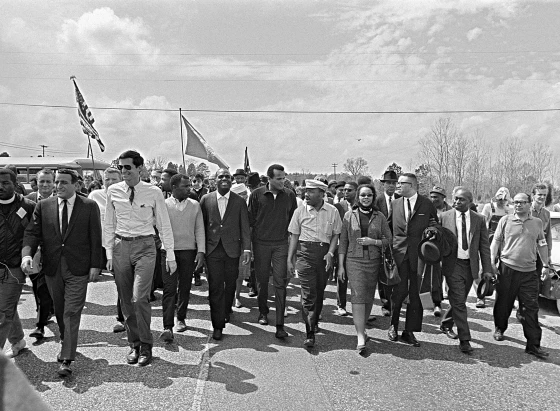Harry Belafonte put it all on the line for Black people: his career, his heart, his soul
Share
Explore Our Galleries
Breaking News!
Today's news and culture by Black and other reporters in the Black and mainstream media.
Ways to Support ABHM?
By Curtis Bunn, NBC News
Belafonte was a trailblazer in entertainment, but he was equally committed to the cause of equal rights for Blacks around the world.

Jean-Louis Atlan / Sygma via Getty Images
At the height of his illustrious entertainment career, which spanned more than 70 years, Harry Belafonte risked it all for the good of Black people. On the stage or in the background, Belafonte supported the Civil Rights Movement in multiple ways, understanding that his involvement would impact his professional endeavors.
He didn’t care.
One of the many elements of Belafonte’s legacy, following his death Tuesday at 96, is that he always seemed to put his people first.
“He was truly one of the first artists, actors who seamlessly merged social justice into his work,” said Imani Cheers, an associate professor of media and public affairs at George Washington University in Washington, D.C. “It wasn’t an afterthought. It was a part of him with his work in film and music.”
Cheers said Belafonte’s activism is doubly impressive when compared to today’s, when “activism is seen as something that can be a ‘like’ of a post on social media,” she said. “It’s like, you engage and go to one protest or rally and you say, ‘I have done my part’ and then they don’t need to engage in the movement in more meaningful ways.”
“Harry Belafonte truly showed and gave a blueprint on how to literally live the walk and walk the talk in ways that we just have never seen before. … But I pray that we will see again,” Cheers said.
Belafonte, who died from congestive heart failure, developed a close relationship with Martin Luther King Jr., the iconic civil rights leader, and became immersed in the struggle for civil rights. He refused to perform in the South from 1954 to 1961, which opened him up to being blacklisted in Hollywood during the McCarthy era and a subject of attacks by racists. It did not stop him.
He often marched with King and others. And his impact was felt behind the scenes, too. Belafonte became a key fundraiser for the Civil Rights Movement, according to the King Center. When King was arrested in Birmingham, Alabama, with other activists in 1963, the entertainer raised $50,000 (nearly $500,000 in today’s dollars, according to the Bureau of Labor Statistics) to release the group from jail. He later rallied several other entertainers, including Marlon Brando, Paul Newman and Tony Bennet, to become involved with the movement.

AP
He engaged with presidents, from John F. Kennedy to Barack Obama, pressing them to have a sense of purpose and urgency in addressing Black people’s needs. When the first Black president asked Belafonte to “cut him some slack,” Belafonte replied: “What makes you think that’s not what I’ve been doing?”
Belafonte’s militancy extended to Africa, where he visited often, especially Kenya. He was a staunch activist against apartheid in South Africa. “Paradise in Gazankulu” his last album, released in 1988, is about the plight of South Africans living under apartheid. He teamed with South African artists to tell the story of the oppression Black South Africans faced.
“It is really important for younger generations who might not be familiar with his movies or with his music to really understand the way in which he was so dedicated to what now people call the causes,” Cheers said. “He was at almost every pinnacle moment in civil rights history for people of color in this country. And he was at the forefront, but most importantly, what I think is really beautiful is that a lot of his most meaningful work was in the background.”
Click here to read the whole article and see additional context
Click here to read a “living history” of the current national and international uprising for justice.
Visit the ABHM exhibit on Social Movements of the 60’s, 70’s and 80’s to explore more unsung heroes and organizations of Civil Rights.









Comments Are Welcome
Note: We moderate submissions in order to create a space for meaningful dialogue, a space where museum visitors – adults and youth –– can exchange informed, thoughtful, and relevant comments that add value to our exhibits.
Racial slurs, personal attacks, obscenity, profanity, and SHOUTING do not meet the above standard. Such comments are posted in the exhibit Hateful Speech. Commercial promotions, impersonations, and incoherent comments likewise fail to meet our goals, so will not be posted. Submissions longer than 120 words will be shortened.
See our full Comments Policy here.